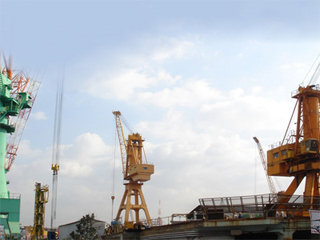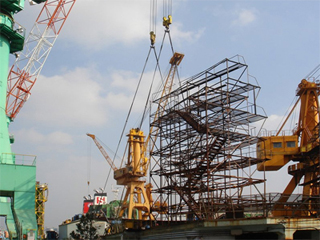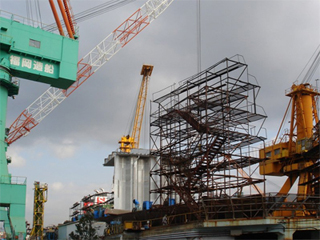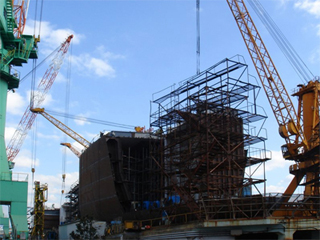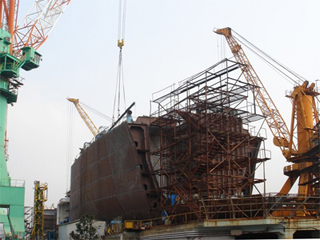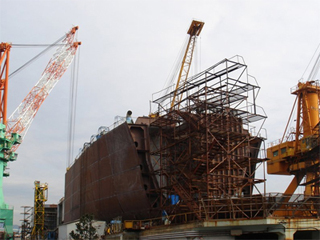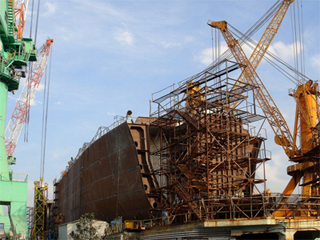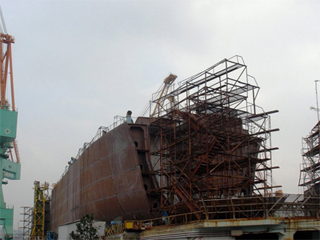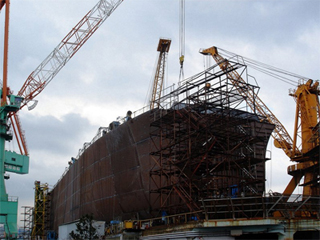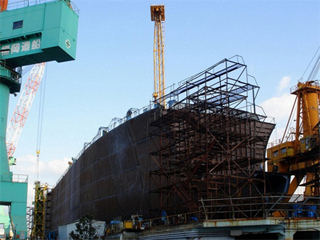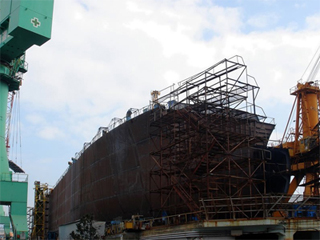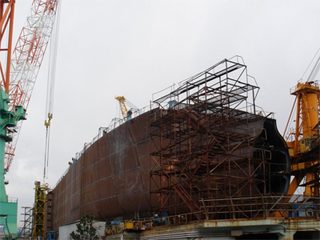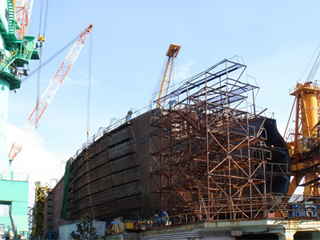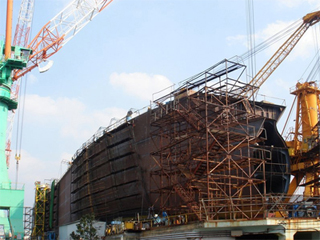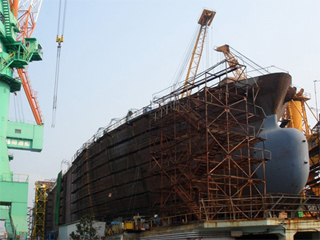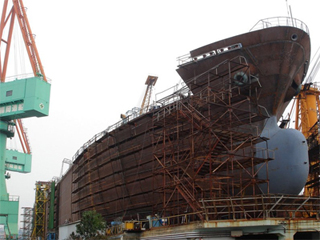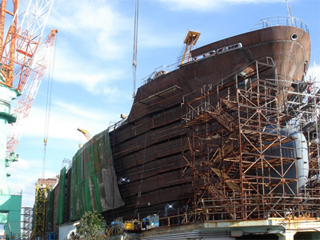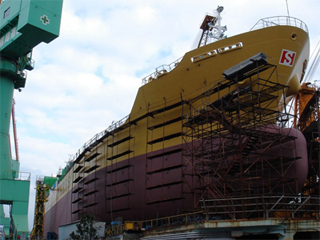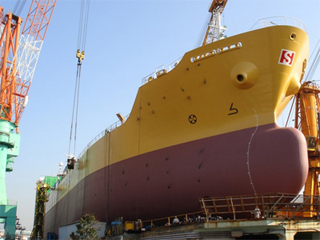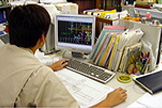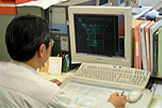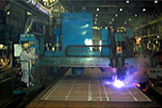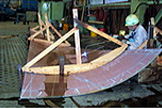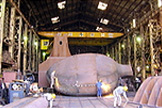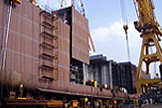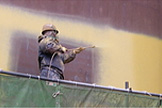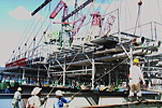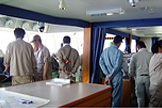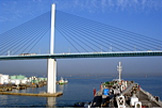Building Process
There are various processes for completing to build huge ships of 6,000tons by own weight. All processes are essential to build a ship with a complicated function for sailing, loading cargoes, and crew living. Ships are built according to schedules which managed effectively by many people such as our design team with a lot of experiences and flexible ideas, and the craftsmen who inherited a traditional technique.
Design
The design is classified into basic design and detailed design. At the basic design stage, we settle demands with a ship owner through the meeting an order beforehand, and make a plan overall to provide maximum performance in various limitations. At the detailed design stage, we subdivide the drawings and the information which is compiled at basic design, and make detailed drawings to be able to product rationally. Based upon this drawings, we start shipbuilding.
Lofting
The design drawing is written by being scaled down and omitted, so we cannot cut a steel plate based on this drawing. In addition, we have to unfold the drawing on a plane shape because a ship is constructed in a curved surface.
Lofting means the work to make the model that we can cut actually and assemble based on the design drawing. We have made a model of the original size before, but in recent years, we make cutting data with a computer.
Numerical Control Cutting
Based on a model made by lofting, NC cutting is the work to actually cut out the form of the parts from steel plates. Craftsmen have cut it with a cutting machine before, but now it is mechanized and is able to cut out the complicated form automatically, when we input the data of the lofted drawing into a NC cutting machine. It does the marking to fill in the name or the installation place of the parts at the same time.
Bending
A ship consists of complicated curved surface, so we need to bend the steel plate because it is a plane. Pushing it with a press machine or heating the surface by a gas burner, we bend it carefully little by little to match the model. In particular, as for the work to bend the smooth curved surface by thermal processing, most are done by hand by the skilled craftsmen, and it could be said craftsmanship.
Assembly
Block Installation and Assembly
We install and joint assembled blocks by right order on a building berth by a crane, and assemble them in the form of the final ship. We must fix them at the correct position because the shape of the ship is warped if the fixed position of the block is wrong. However, the weight of a large block is close to 150 tons, so assembling needs serious technique and labor.
Painting
When the assembly is over, the painting begins. The painting plays a big role not only to improve the appearance of the ship, but also in the safety to prevent from corrosion. Furthermore, a painting standard is strengthened for complying with environmental problems, so the painting is a very important process on shipbuilding.
Launching
When the block installation and the painting are over, a ship is floated on the sea for the first time. The building berth inclines to the direction of the sea like a slide and we let a ship slide on it and float on the sea. The launching is the tensest moment for our shipyard staffs and is also the most important day on shipbuilding. This day is open to the public and we hold the launching ceremony splendidly.
Outfitting
Outfitting means to equip the completed hull with pipes, an engine, and interiors and electric wires. By the launching, we finish their construction of approximately 70%, and after the launching, we let the ship moor at a quay and do the rest of the construction. We do each of the inspection for an equipment of hull fittings which completed steadily.
Trial
After finished the outfitting, we apply performance tests such as a vessel speed and the turning by running a ship actually, and confirm to be satisfied with the contracted specifications between the owner and our shipyard. At the same time, we do the operation check and the function test so that the apparatus which we put on a ship shows original performance. After we finish this trial run, we just wait for the date of delivery.
Delivery
A ship leaves the shipyard and sets sail for the ocean at last. On that day, all crews gather and people of various nationalities come and go in our shipyard. If everything is ready, it is finally a start on a voyage. A ship is seen off by the guests such as owners and our shipyard staffs, then sails into the seas in the world.
Bon Voyage!




